
















Live Oak School supports the potential and promise of each student. We provide a strong academic foundation, foster skills to effect change, and develop courageous and conscientious learners from all backgrounds. We inspire students to advance equity and inclusion, to act with compassion and integrity, and to pursue a lifelong passion for learning.



Welcome to the Spring 2024 issue of Live Oak Magazine! This issue celebrates Live Oak as a learning community that thrives from the experiences in our classrooms and in our professional community as we pursue intellectual, artistic, and physical challenges. When our students and staff step onto campus, they do so with the intention to grow and expand their expertise.



We see this expertise all over on display throughout our campus. We have always been proud to show off the creative art work that our students produce. Take a walk down any hallway or step into any classroom at Live Oak and you will see walls, shelves, and windows covered with artistic expressions of our students’ identity and perspectives. Our art program teaches our students about composition, form, and perspective, while integrating studies of artists from around the world. Our students find windows and mirrors in the curriculum and are challenged to find new mediums to express themselves.



We see this expertise every time our teachers try something new. Live Oak is a professional community that embraces and encourages its faculty and staff to be lifelong learners. Every conference, workshop, or training pushes our faculty forward in the development of their practice in order to develop the potential and promise of our students. As our students are learners and leaders at school, our faculty and staff are learners and leaders in the field of education. Their professional goals drive their commitment to ensuring our programs are accessible and challenging to students, to introducing more innovative, student-centered teaching practices, and to fostering our students’ capacity to have agency in our changing world.
We see this expertise when our students stand on the threshold of middle school. Since the years before Live Oak had a middle school program, the fifth graders have delivered a Fifth Grade Speech, taking the stage to reflect back on their growth and development as students and as people. As they are getting ready to make the momentous transition to middle school, our fifth graders gain a better understanding of who they were, who they are, and who they want to be. They are challenged to articulate what is important about them and what is important to them.
I feel so inspired seeing this expertise in action on a daily basis. The end of the year always brings evidence of the impact of our school upon our students. Between the time a Live Oak student enters kindergarten and the time they accept their diploma on Mariposa Street, they gain knowledge, understanding, skills, and mindsets that allow them to reveal their passions, embrace their areas of growth, and refine their purposeful pursuits. I hope you also learn from our expertise.
 Virginia Paik Head of School P ’20
Virginia Paik Head of School P ’20











The Lower School Music Festival in January showcased the talents of the entire Live Oak community as parents and guardians improvised on instruments alongside their students. The Middle School Music Festival in April followed with a range of classic and contemporary songs that got the crowd feeling the groove.





Members of the Green Team Leadership Crew worked with Friends of the Urban Forest to plant trees in San Francisco's Mission neighborhood in April after performing a city-wide study examining tree equity, or tree cover as it relates to demographics and social justice.

Live Oak families had another great turnout walking in the Black Joy Parade in Oakland in February. The African American Affinity Group is one of many affinity groups that Live Oak families took part in actively throughout the year to gather, connect, and celebrate shared culture.
The Lightning varsity girls basketball team won the 2023-24 San Francisco Athletic League championship with a 21-9 victory over CAIS in the title game. The squad finished a flawless 8-0 on the season while winning all their contests by double digits. Live Oak last earned a varsity girls basketball title in the 2021-22 season.
 See more photos from the Middle School Music Festival.
See more photos from the Middle School Music Festival.




I loved everything about it, and mostly loved being in the first grade classroom. My grandchild's teachers were so professional!

Classrooms and hallways were full of visitors as we welcomed the special people in our students' lives to campus on Grandparents and Special Friends Day in May. The annual tradition brings members of the Live Oak community together to experience the joy of a Live Oak education. The day featured a welcome assembly on the Rooftop with guest speaker Sue Ann Schiff, grandparent '29, followed by classroom activities, campus exploration, and photos.




The middle school drama cast and crew put on five outstanding performances of the classic, Charlotte's Web, for the spring play in March. Not only did the performers entertain the audience onstage, attendees got to take part in an interactive County Fair experience complete with games, prizes, and fair concessions, truly bringing the show to life.

 See more photos of the spring play.
See more photos of the spring play.




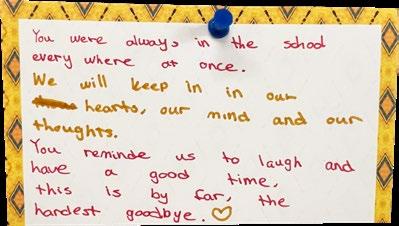

Great program! It was very informative and interesting. I really enjoyed the interaction and seeing all the exciting spaces around the building.


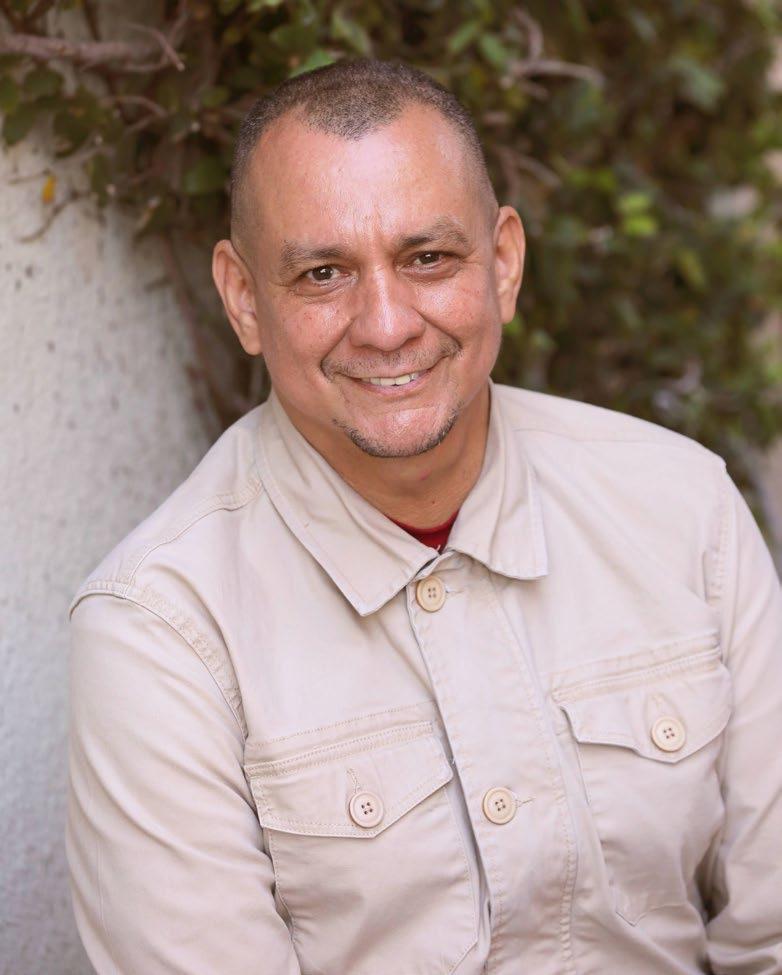




1969-2024


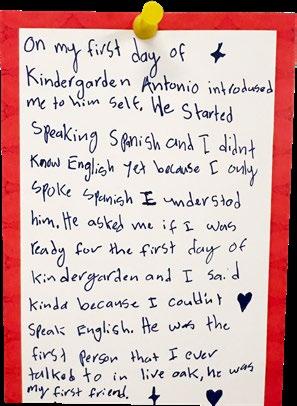
We remember and appreciate the immense contributions that Greyner Antonio Ampie made to the Live Oak community during his 17 years as facilities manager. Antonio passed away peacefully on April 18 in the company of his wife, Imara. Antonio brought so much joy to the students of Live Oak and the faculty and staff with whom he was always quick to lend a helpful hand, crack a joke, or be a supportive sounding board. The overflowing remembrance board in the first floor lobby of our campus is just a small indicator of the big difference Antonio made in the lives of those he worked with. In everything he did, Antonio embodied a selflessness that brightened others' days. A memorial service was held on May 18 at St. Gregory of Nyssa Episcopal Church to celebrate Antonio's life.

Lower school art students build their artistic skills on top of a simple foundation: making art is fun. As they explore different ways to share their identities and refine their skills, students gain a deeper understanding of themselves.
i o n

Hands carefully paint hardened pieces of paper mache. Eyes closely examine the precision of each line. Young artists ask questions aloud without breaking their gaze on their creations. A midweek morning in the lower school art room is busy with creative activity, and an important process of self-discovery is taking place.
"Everything that we do is about identity," says lower school art teacher José Trujillo. "I've created and designed this curriculum so that all our students can express freedom and self expression. I want everyone to show individuality and ultimately just have fun."
The lower school art program's project-based curriculum gives students the opportunities to apply their growing art knowledge in ways that are process-oriented, understanding that the process is layering their understanding of themselves and their world. Trujillo and fellow art faculty Scott Wilber (K & 6-8) and Mario Martinez-Munõz (K-5) thoughtfully craft projects where students can share a story about themselves and add to it year over year as their interests grow, their experiences expand, and their art literacy develops. A unit on Japanese artist Yayoi Kusama, an exploration of Afro-futurism, or clay coil pot project based on a Mexican folk story open windows for Live Oak students to see others' identities portrayed in

a variety of creative ways, in turn providing inspiration on how they view and share about themselves, while pushing their artistic boundaries.
"For our students, it's about how can I bring this imagery, this symbolism of my identity into my artwork. I think that's what's beautiful," says Martinez-Munõz.
One of the ways students are able to express themselves freely and learn about themselves in the process is that they are not pressured to meet the external aesthetic expectations of anyone else. Their projects have guidelines, timelines, and concrete mastery of core skills, but Trujillo and his colleagues intentionally unburden their students of the need to fit a particular artistic mold.
"A lot of the things we do here, nothing looks the same," adds Trujillo. "And that's my model. If you look at the kids' work here, every piece has its own unique style and there's a story behind it."
These creative learners have the green light to figure out what styles they like, which techniques they are good at, and how they best learn when they are given a lot of freedom to try new approaches.
While the overarching intention is for students to enjoy art for art's sake and to have fun with the openended process, there is inevitably a challenging element that students face as they embrace some of the art fundamentals. Through this challenge, students begin to understand more about their persistence and ways they tackle more challenging tasks moving forward.
"I try not to interfere too much because I want them to understand that art is challenging, but can be rewarding emotionally," explains Wilber. "And that frustration can drive you to a different place of wanting to succeed at something and finding your own way of doing something. All so that they have the tools to make something new later on."



Kindergartners learned that their individual identity is what they see by shaping their own hand prints out of clay and painting them in the colors with which they identify.

Fourth graders crafted paper mache dolls that mirrored familiar handmade toys, giving them an important perspective on how toys are created in diverse socioeconomic conditions around the world while portraying pop culture characters of personal interest.



Inspired by Australian social media influencer, Ginklet, fifth graders brought whimsical pictures to life in ceramics, highlighting that all types of art are valid and expressive.
By expanding the breadth and depth of our curriculum we will inspire the passion and achieve the potential of every Live Oak learner. liveoaksf.org/forward

Like the students they teach, Live Oak faculty and staff are lifelong learners. They regularly engage in professional development that hones their teaching skills and pushes their boundaries toward being responsive, innovative, and creative educators. Every conference, workshop, and training session builds an array of skills ranging from content areas to social-emotional strategies, cultural inclusion and identity, and technological integration. As they layer on their teaching skills, Live Oak faculty help open their students' eyes to the vast potential in their learning.


Project Zero is an organization within the Harvard Graduate School of Education that engages in educational research in a variety of ways and helps educators like us be more innovative, creative, and student-centered. I was thrilled at the opportunity to learn alongside my Live Oak colleagues and an international team of education specialists from all over the world. The intersection of work in the arts, education, and ethics is a cross-section of many of my most passionate interests. One of my focuses this year has been to pinpoint which thinking routines I'm using in my classroom, and during this workshop we explored the "3-2-1 Bridge" thinking routine, which we have been experimenting with. I'm seeing the benefits of this already in our new interdisciplinary unit merging reading and writing as our students learn about folklore. Because Project Zero is such an umbrella of disciplines and pedagogies, I've also been very interested in the tinkering approach that shifts my role in the classroom at times to being more of a facilitator. We have been redesigning parts of our classroom to support student exploration through tinkering and we are seeing how engaged the kids are and how much they are taking the lead in their learning by sharing how they think and what their interests are. My growing expertise coupled with the students' enthusiasm is a launching pad for developing

JEN PHILLIPS, SECOND GRADE TEACHER


ASHLLEY VELA, SPANISH TEACHER
MINERVA CERÓN, 6TH GRADE HUMANITIES TEACHER
Project Zero Conference – Harvard University Summer 2023


PROMOTE THE LIVE OAK WAY
We will communicate researchbacked methods and philosophical motivations for underlying Live Oak's teaching and learning, and conscientiously tend to our school culture.
liveoaksf.org/forward
KEREN BEIN, SECOND GRADE TEACHER





In 2008, I joined a professional community of Bay Area independent after-school directors whose mission was to create vibrant and connected after-school programs through an anti-bias lens. We asked ourselves: What if we had an expanded community of fellow out-of-school educators and leaders helping you start from wherever you are now? This question drove my curiosity and I set out to explore what the discussion looked like around the after-school program (ASP)/out-of-school time (OST) topic in independent school spaces. I discovered that both NAIS PoCC and NoCa PoCIS had not yet had the topic of afterschool/out-of-school time presented at the conferences.
The focus of my presentation was an after-school program with an anti-bias lens to promote diversity, equity, and inclusion by addressing and challenging biases, stereotypes, and discrimination. To my surprise, many were very eager to discuss all things ASP/OST. Many of my connections with the conference attendees have extended past the conference and I continue to offer guidance, suggestions, or recommendations to many who attended my ASP/OST discussion. Every summer I reimagine the year before and work to build culturally focused programs that delight and celebrate my students and staff in all their identities and ways of being.

"Empowering After School Professionals to Transform Independent School OST Programming and School Culture"
NAIS People of Color Conference – Fall 2023
People of Color in Independent Schools Nor Cal Regional Conference Spring 2024



The Art of Tinkering: OctoStudio San Francisco Exploratorium
December 2023
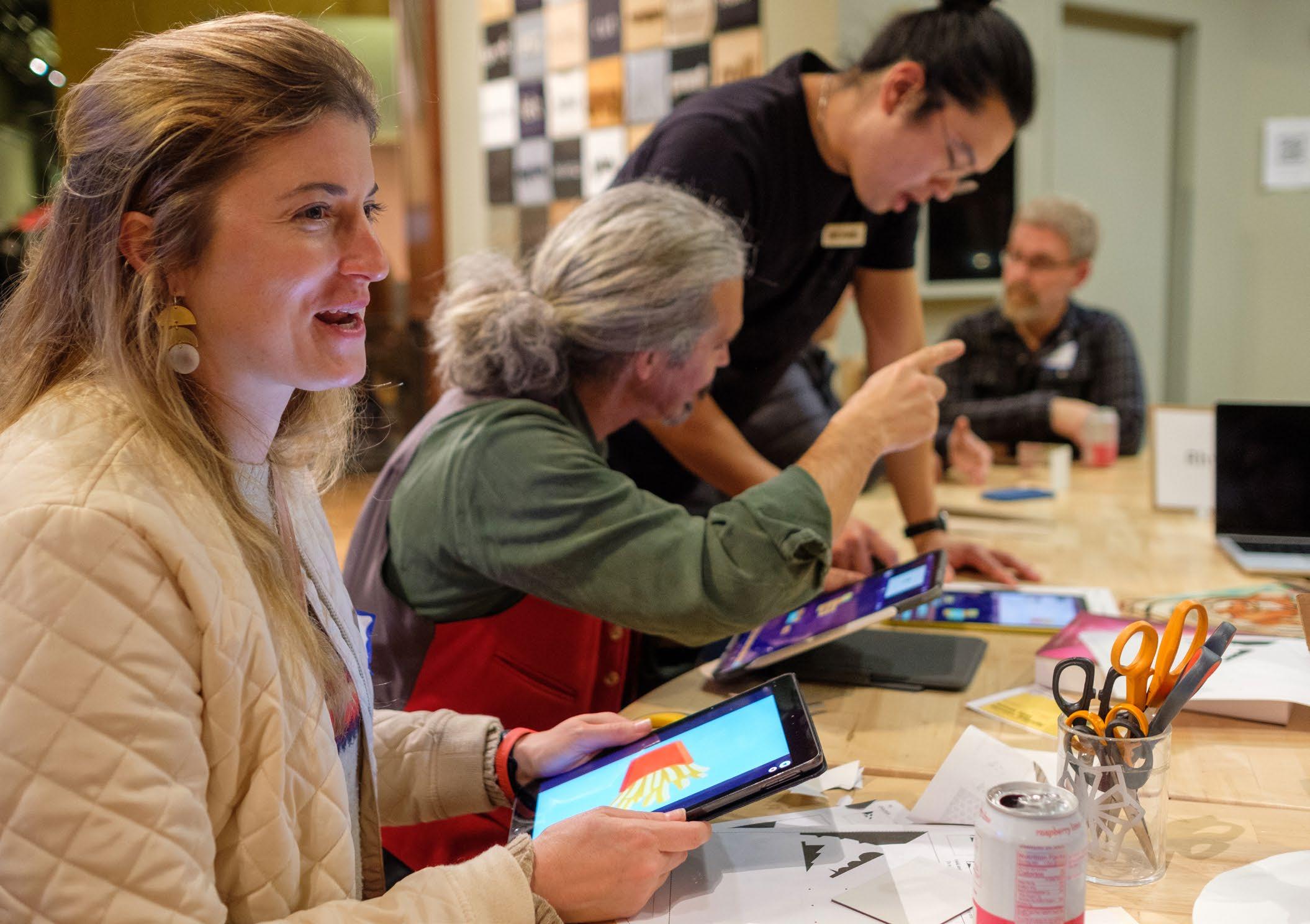
The Exploratorium professional development focused around the app OctoStudio, which is an iPad version of the coding platform Scratch by MIT. I was interested in the OctoStudio app as it is a great project at the end of each of our science units for students to create a visual model of what they learned. The Exploratorium has so many engaged enthusiastic educators on their team and it was exciting to “nerd out” a bit. I liked the community and got some great ideas to bring back to my classroom. We have been using OctoStudio more frequently, either as an academic choice option, or as an option for some science projects. It is easy to pick up without a coding background and is a great introduction to coding. It helps boost some of the software engineering interest in students at a very accessible level. Students can quickly feel like they created something with code, and can show their thinking and understanding about topics like the ecosystem and the environment in a new way. The app was easy to understand, so I am able to play more of a facilitator role when giving it to students instead of having all the answers. It is a great way for students and faculty to construct their own meaning.



In January 2024, I was part of a gathering called Gandhi 3.0, which convened 80 changemakers from 15 countries. Taking place at the Gandhi Sabarmati Ashram in Ahmedabad, India, the retreat explored how we, as individuals and collective structures, can organize around values of nonviolence and selfless love in today's increasingly unpredictable and volatile world. I have long been exploring questions of how to lead with selfless love and what it takes to truly "be the change" we wish to see in the world. It was deeply human. The transformation-led organizing principles and living embodiment of many changemakers left a profound impact on how I show up in the world, including with students in the classroom. I now connect our curricular lessons to stories and examples of real-life changemakers living their values in today's world. Using various design principles learned, I also aim to structure classes and lessons in ways that can make the content come alive through the students themselves and for them to drive the learning by applying themes and skills from historical content or literary techniques we learn in class to making a positive impact in their own lives and our world at large. The distance we can walk together is far further than what we can cover alone. It’s not what we do but who we become by what we do.

Ghandi 3.0 – Ahmedabad, India Winter 2024
During a staff professional development day in March, Live Oak faculty and staff hosted a Professional Development Symposium. The day featured sessions led by faculty and staff members sharing with their peers their experiences in recent professional development events. Some of the faculty and staff you see featured on these pages presented at the symposium, which served as an interactive exchange of new pedagogical approaches, innovative classroom tools, and interdisciplinary insight. Faculty and staff were able to take part in many of the same types of discussions and activities that took place during the professional development workshops. Our faculty and staff were able to report out and spread the skills and information they learned to add to the collective expertise among our broader learning community. The faculty and staff members featured on these pages are just a selection of the constant learning our staff and faculty are undertaking to continue innovating.

SEED (Seeking Educational Equity Diversity) is a national organization that has been around since the late 1980s that brings together educators with the goal of supporting social justice on a systemic level. SEED's New Leaders Training is a seven-day intensive workshop at which up to 50 educators, parents, community leaders, and professionals from different fields are immersed in multicultural SEED materials and methods. I was able to see the power of using our own stories and difficult conversations to create a more just and empathetic community. It was a powerful experience—not always the easiest or most comfortable sessions, but each one provided deep reflection and contemplation. Currently, I co-facilitate a SEED Seminar for faculty and staff at Live Oak. Eventually I can see this expanding to SEED Seminars for parents, students, board members. I also use some of the activities I picked up in my training in my advisory. Facilitating important conversations and dialogue amongst faculty and staff will allow us to feel more comfortable bringing our whole selves and embrace all of our identities. By doing so this will provide windows and mirrors for our students. There are so many people fighting the good fight. It was inspiring being in a workshop where one can feel vulnerable and remain authentic.

WIL DIONISIO, PE TEACHER
SEED New Leaders Training Dominican University Summer 2023

5,000+
Professional development hours provided for faculty & staff annually
94
Different conferences, workshops, and trainings faculty & staff attended in 2023-24
19
Live Oak faculty & staff who attended the 2023 NAIS People of Color Conference in St. Louis
24
Faculty trained in OrtonGillingham reading instruction, including 7 in summer of 2024

With contributions by fifth grade teacher Naomi Hamburger.


As a part of their spring writer’s workshop, Live Oak fifth graders step to the podium to share a personal speech with peers, family members, and teachers. This annual event is a Live Oak rite of passage, a cherished stepping stone on the way to the wider world of middle school learning. What does a 10- or 11-year old say to the world when given a microphone and the undivided attention of an audience? Some "fifthies" reflect on their academic journey in lower school. Some interpret current events from the news headlines. Still other writers travel inward to contemplate facets of their identities, embracing poetic and figurative language.
In preparation to scribe their own address, the students read and listen to works by diverse historical and con temporary figures. This thematic thinking work con nects deeply to the fifth grade winter study of literary essay, as well as fantasy and memoir book clubs. As they do in so many ways throughout their K-8 experi ence at Live Oak, fifth graders take agency in crafting their speech. Each speech is unique, thoughtful, and personal, reflecting the learners and individuals they are becoming. Each year the fifth grade speeches take on differ ent shapes, but share a common purpose: to give pause to re flect on who these students were, are, and strive to be.



I wanted to write my speech about something funny that I knew a lot about. I think it was very fun in the making of the speeches, even though you may have to take certain things out. It's exciting, but you also get kind of nervous wondering, what if they don't think my joke is funny? But part of this is thinking about your audience. At the end our teachers had us write something that we've learned about middle school related to our topics and I wrote how I have learned from my sisters' experiences and their advice that middle school might be challenging, but you just have to persevere through it.

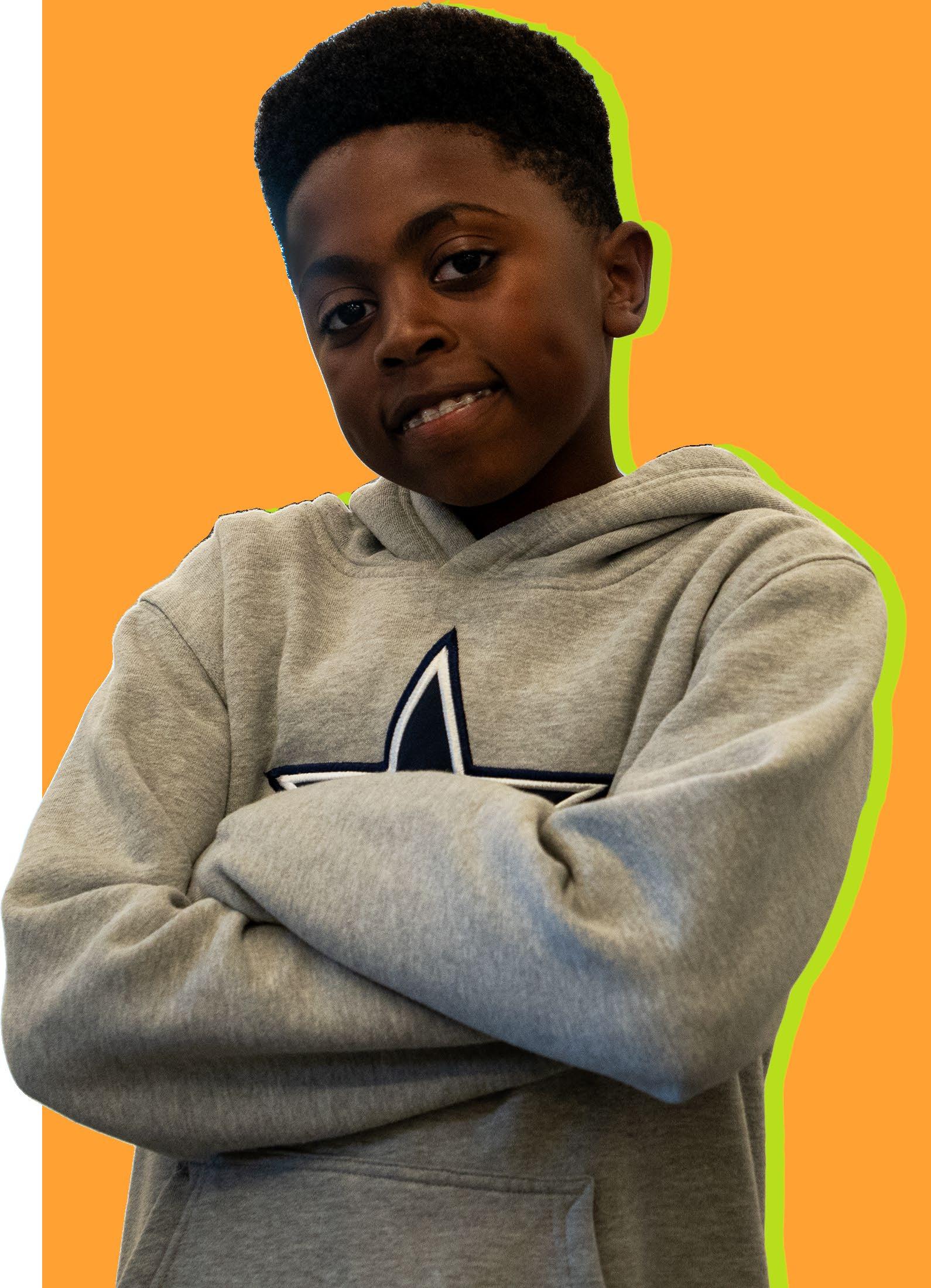
"My sisters are the first ones I go to when something is on my mind. My sisters are there for me when I'm not ready to speak up. When I don’t feel ready to tell my parents something, I first go to my sisters ... On my journey to middle school I will always remember their advice and experiences."
My favorite part of the speech writing process was being able to express my ideas and incorporate some of my passions too. I like learning about history and my speech was based around war. I first wrote a lot of the things I knew about WWII, then went back and refined it to help make sure my audience could understand it, no matter what their age. Making this speech can be kind of hard because even though I'm sharing my ideas, I don't usually share my ideas in that same way; I usually just talk with my friends, not to a room of a hundred people. I learned that when I find something I am passionate about, I can write well.
"Since war costs money, then the government prioritizing power over people means money does not go where it should: towards all of the other problems that we face on our planet. So rather than creating more problems for people, we should solve problems that already exist."



It was fun to brainstorm and find things that we are passionate about and sharing them with other people. I used to get bullied and I'd ask myself what I was doing wrong. I picked this topic to show how I've grown since then. It is a little bit nerve-wracking sharing it in front of a lot of people because you're not sure if the audience is going to laugh at your jokes or if they will interpret your speech the way you want. I tried to be more personal with my speech so that the audience will engage with me more if I'm giving examples of my own life. I would encourage future fifth graders to be confident and not to worry about whether others will like their speech topic, but instead think about: do YOU like it? If so, then that should be your speech. You will give it your very own perspective.
"Whatever age you are, you're always going to find flaws in yourself. You're never going to be perfect. But pressuring yourself to be is worse than actually being perfect. Perfection doesn’t actually exist."
" In my short lifetime, I’ve seen prejudice against neurodivergent people first hand ... You can fight this prejudice with knowledge. Additionally, spend some free time doing volunteer work and interact with neurodivergent people. If enough people do this kind of thing then we could eliminate this prejudice, or at the very least make it as rare as possible."
-Ben K. "Neurodiversity and You"INSPIRE EVERY LEARNER
By expanding the breadth and depth of our curriculum we will inspire the passion and achieve the potential of every Live Oak learner. liveoaksf.org/forward


My favorite part of this process was picking our themes and thinking about all the different ideas to write about. I picked this topic because I feel like screens are a really big part of my life; basically so much of what I do involves screens, whether it's at school or at home. Giving the speech is kind of scary, but we practiced and rehearsed our speeches with partners in class. Plus, it's good knowing that everyone will know about this topic and why it's important to me. In researching and writing this speech I learned how much other people are impacted by technology through


"People don’t realize how much technology changes our world in a positive way and in a negative way. Technology is engraved into our world and we can’t change that, but what we can change is how we use technology in a non-harmful way."
I chose this topic because I feel that it's really important and people are not investing their time in protecting nature because they are caring more about their problems, not the problems that are going on in nature. Doing these speeches is really fun because I get to share all my ideas on my topic; it's like there are no limits. You can choose any topic and just stick to it and say what you think about it. What was challenging were the deadlines because it's hard for me to write fast. I really learned the importance of writing and public speaking in sharing your ideas. Public speaking is exciting and fun, but can also be nervewracking. Practicing in from of my classmatets really helped.
"70% of plants and animals live in forests, so if humans cut down all the trees then many species would be affected and might go extinct ... We should protect wild spaces because without them the world would just be less beautiful and unique."

Live Oak's Extended Care Program engages students in a wide variety of high-interest activities that round out their school days and challenge them in creative, athletic, and intellectual ways. The talented experts who lead three of the most popular offerings within Extended Care's Roots & Branches program help learners of all ages find their passion and develop their budding sense of self.

Angel Chen first began teaching in 2015 when she moved to San Francisco to earn her Master's degree at the San Francisco Conservatory of Music. She originally intended to pursue a career in violin performance, but after being introduced and providing lessons to a high school student—who has since gone on to attend Julliard—Chen's success in teaching music inspired her to continue sharing her knowledge with other students of all ages.
"I am particularly motivated by the fact that each student is different and requires a different approach to musical instruction," says Chen. "I have observed my students grow in patience and discipline, as well as creatively—some have come up with their own songs.

"I try to make lessons fun and challenging by incorporating music and songs that they love, allowing them to learn the basics of the instruments they choose. I have a young violin student who has been particularly dedicated. We have been practicing duets (student on violin, me on piano) and to be able to do this together is something that I am proud of."
Derek Schmidt has over 20 years of experience as a songwriter, composer, and sound designer with a Master's degree in Composition. Schmidt was always obsessed with the piano as a kid, making his older sister teach him the piano before going on to teach himself guitar. Since then, Schmidt has performed, written music for many genres, and hosted a songwriter showcase at a local San Francisco bar.

"Music is such an important part of being human," explains Schmidt. "I love when my student's understand a challenging abstract music concept and a new world of possibility opens up for them. Lessons offer a deeper understanding of music and culture, where students can feel more engaged with the world around them. And because of the need to practice their instrument, students learn the rewards of focus and hard work, which definitely apply to leadership.
"I try to mix both theory and musicianship with improvisation. Improvisation is a great way for young students to enjoy playing music by making their own. They are often surprised that they can make their own music and not just play others' songs, and many students respond to that. The abstract critical thinking needed for music theory can be understood by the young student with just the right analogy or metaphor."


Paolo Pavone's journey as a youth soccer coach started in 2016 when he earned his grassroots coaching license under the US Soccer Federation. He still plays at a high level locally with El Farolito SC and spent the spring/summer of 2024 playing professionally in Asia. He points to his experience watching Italy win the World Cup in 2006 (his dad is Sicilian) —the same year his school team won the fourth grade soccer championship—as having a formative impact on his love of soccer.
"Knowing that we as coaches can potentially spark a fire inside a kid's heart by introducing them to the beautiful game motivates me every day," says Pavone. "It’s rewarding to see some kids really break out of their shell and become leaders. Our main goal is for the kids to have fun and learn how to be good teammates. They learn the value of collaboration and that there is a difference between being a good teammate and a good player.
"Kids also learn to manage emotions and build resilience when things don’t go their way. Our soccer program provides opportunities to form lasting friendships and connections. If we feel like a team can play at a competitive level, we push them to reach their full potential and compete in higher divisions. For example, last year's fifth grade boys team finished in the final eight of the State

Master DeLonzo Pope is a 6th degree black belt in Tae Kwon Do, and a 6X California and Nevada State Champion in forms, sparring, weapons, and breaking. He started in Tae Kwon Do in the mid-80s, advanced to red belt and then took a 20-year break, returning to the art in 2007 while going back to college.
"Programs like Tae Kwon Do help develop well-rounded students and leaders through the process of learning never to give up and to give honest effort to try," Pope explains. "As students gain experience and trust themselves more, their self confidence grows. Also, their self-awareness expands with the understanding that they have a greater responsibility to themselves and their classmates. They learn that while they are learning Tae Kwon Do as a personal journey, they are also part of a team.
Cup. That is a very special accomplishment for a purely school-based team, and a majority of the team has now gone on to play for club academy teams.
"There is a current fifth grader who has shown incredible growth during my time working with them. They first started playing in the spring of last year, and they have already progressed onto playing at the club level in only a year of playing organized soccer. This was all due to their discipline and ambition to improve. This player in particular was very shy and reserved when I first met them, but now they are one of the team captains!"

"They can express themselves in the martial art while learning about who they are in a very structured environment. Seeing the progress of each child is incredibly moving. If you can learn to do a round house kick, you can learn math, reading, etc. With the belt ranking system of Tae Kwon Do, there is an inherent duty to help those that are under you or new to the art. The qualities of being a leader are ingrained in the ways we do our practice.

"While the activity of kicking, striking, sparring, and breaking boards can be intimidating at first, the kids' desire to excel coupled with the energy of the entire group trying to achieve a goal—is extremely motivating. So far we have had seven students promoted to black belt here at Live Oak, two of them promoted to 2nd degree. Each one of them have grown in self-awareness, discipline, understanding of their martial arts skills, social skills, leadership skills, and a keen awareness of self defense."


The Live Oak Young Alumni Changemaker Award was first awarded in 2022 and over the last three years has recognized current juniors or seniors in high school who are modeling civic engagement among their peers, are leading positive change, and are demonstrating an ability to inspire others to act. The three honorees from the Class of 2020 are showing that Live Oak students do not wait to make an impact in their communities.

Growth, curiosity, and creativity were the three biggest things Live Oak prepared me with to be a Changemaker. Throughout my time there, I was always supported to be myself and was never discouraged from trying out new things. This allowed me to be open to new things, gaining new interests, and as a result, I was able to use my interests in a creative way not just for myself but for others as well.

Washington, Fall 2024
Asthe co-founder of the program DiveIn, Sebastian Horton-Vega '20 gives swim lessons to kids at Rosa Parks Elementary School. Their mission is to provide kids from low income families the opportunity to learn water safety for free. After becoming a nationally certified lifeguard, Sebastian recruited members of the Stuart Hall High School swim team, as well as other passionate swimmers, to join DiveIn, increasing the program’s capacity to give equitable access to life-saving skills. As an athlete and an advocate, Sebastian went on to organize a Spikeball tournament to fundraise for Maui as they recuperate after the wildfires.
Know a Live Oak alum who is doing impactful work in their community? Nominate a changemaker today! We are seeking nominations for the 2025 Alumni Changemaker Award and the Young Alumni Changemaker Award. The deadline for nominations is October 31, 2024. Scan the code to nominate!



Watch the interviews with Sebastian, Liv, and Jordan in the Changemaker Day video recap.


Live Oak encouraged me to be a leader in my community by allowing me to have more choices in my studies, making me a more confident and decisive person. My classes always had a focus on real-world application and the importance of using my knowledge to benefit others, not just to get a good grade.

Leader of the Book Society at Sacred Heart Cathedral Preparatory, Liv Kirkeby '20 leveraged her role to get her community excited about reading. She coordinated fundraisers for the World Literacy Foundation and collaborated with another school club, Advocacy in Action, to organize a book drive to supply books for another high school’s library that was in need of more resources. Liv was able to incentivize involvement in these fundraisers by turning them into fun club activities. Her role as the Book Society president included coordinating with Sacred Heart’s English department to establish and promote a summer reading project. Moving forward, Liv would like to research how to assist communities most affected by climate change. Her goal is to help the environment by finding more lifestyle changes that are affordable and accessible to all regardless of income, location, or background.

Live Oak prepared me to open myself up to new experiences, and be okay with the uncomfortable. Live Oak encourages students to step outside of their comfort zones and go out into their communities to make change. I believe that both of these were vital in preparing me to learn about and volunteer for a cause that is oftentimes thought of as intense.

Pitzer College, Fall 2024
Through a class at Urban High School, Jordan McCornock '20 had the opportunity to visit California Medical Facility, a medium-security prison in Vacaville, California. She spent two full days facilitating conversations with inmates. Through the connections she made, she was able to write to the parole board on behalf of an inmate who was later released in June 2023. Embracing the power of writing to affect change, Jordan went on to volunteer with The Beat Within, a publication written by incarcerated youth. Jordan served as the Editor in Chief, Creative of the Urban High School newspaper and was a part of the Program Innovation Committee pioneering a new course on digital citizenship. In college, she hopes to further study government and law.
BEN FRIEDLAND earned Freshmen All-State honors in cross country this past fall at University High School and was selected as an alternate for the California State Meet. During the spring track season, his 9:42 PR in the 3200m placed him in the top-10 in the state and top-100 nationally among freshmen in that event.

NATALIE BABLER-KUEBLER, ODDYSEUS
GALLAGHER & IMAN WILLIAMS were part of the high school production of The Giver at the New Conservatory Theatre Center in April 2024.

SAVION SAINT-PRIX, a sophomore at Lick-Wilmerding High School, co-presented at an assembly at Live Oak in February after being featured in a documentary called, "From Stigma to Strength: The Neurodiversity Project", which was directed by Ivy Kilar, a senior at Lick-Wilmerding.
ARI BAHAT advanced to the quarterfinals of the 2024 Golden Desert High School Debate Tournament in Las Vegas. Ari and his debate partner participate on the College Prep debate team in Policy debate and Public Forum debate, where they have focused on the topic of Single Use Plastics. The duo went 4-2 at the UC Berkeley debate tournament before advancing to the Las Vegas finals.
BENNETT RODGERS recently won the New England Prep School Pole Vault Championships as a sophomore at Philips Andover Academy (MA) and has been approaching the school record, which has stood since 1967. He also

Share your updates with us for future issues of Live Oak Magazine!

Amid the bustling cityscape of San Francisco, Cory Mickels ‘02 has found his niche as a dedicated attorney and an advocate for change in his community. He currently is an associate with Hopkins & Carley, practicing employment, commercial, and business litigation. Most importantly though, Cory is a father to a three-year-old daughter, and this past fall Cory started his first year on Live Oak’s Board of Trustees, making it a full circle moment for him.
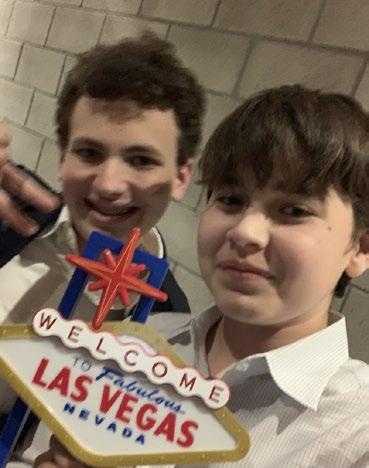

Cory, a second-generation San Franciscan, joined Live Oak as a sixth grader with the help of SMART (Student Mentor and Resource Team), a nonprofit that supports students in overcoming systemic barriers to achieving academic success.

I’ve been fortunate to have lived a fairly diverse life, connecting with people from all economic
backgrounds.
All of these experiences help me bridge the gap between communities.
The transition to a predominantly white private middle school wasn't seamless though. “It was a rocky transition at first coming from a predominantly black public school in Bayview/Hunters Point,” shares Cory. “There were moments where I felt like an exile in my own

community because all my friends went to different schools.”
Yet, around seventh grade Cory found his footing. Cory describes a three-dimensional home project they worked on in seventh grade: “The best part was the level of agency that was given to us. ‘Hey, this is your project. You get to take it wherever you want, and there’s no wrong answers.’ That approach was so different to me.”
Through this process Live Oak, he notes, taught him the invaluable skill of knowing oneself understanding strengths and challenges. Transitioning back to public schools for high school, Cory confronted a stark contrast in educational approaches. Despite the challenges, Live Oak's influence continued to resonate, highlighting the importance of interdisciplinary learning experiences that challenge us and connect us to our larger community.
Outside of his career as an attorney, Cory actively engages in community activism with Open Door Legal and serving on the board of the SMART program that opened the door to his transformative Live Oak experience.
“I try to give back as much as I can,” states Cory. “I’ve been fortunate to have lived a fairly diverse life, connecting with people from all economic backgrounds. All of these experiences help me bridge the gap between communities.”
His passion for the work of a trustee is clear as we discuss ideas to enhance alumni engagement, underscoring the significance of alumni connections for current students, especially those from backgrounds underrepresented in independent schools.
“I think about the internal conversations I was having while I was a student here,” he begins. “The feelings of isolation are real for some kids. It’s important that we pour into the student's whole family when they come to Live Oak. To look at a family holistically and think about what their commute looks like? What resources and support do they need? These are the things that will support the learning that takes place at school.”
In Cory's vision, alumni can serve as mentors, providing valuable insights and support. All of this goes back to an underlying ethos informed by a deep understanding of self: a constant reminder to be a good steward of the gifts he’s been given. Cory deeply believes that everything in life is made better once we identify our gifts and use them to serve others. “That’s the biggest contribution we can make to society.”

earned honorable mention all-conference recognition as a defensive back in football. Bennett's twin sister KATE RODGERS plays for Andover's varsity volleyball team, as well as a local competitive club. She occasionally runs into Live Oak classmate Lizzi Barry at national volleyball tournaments.
LIZZI BARRY was named honorable mention All-BCL West following a strong sophomore volleyball season at LickWilmerding High School.
SOPHIA MCCONATHY recently finished her third year tutoring students in the Philippines online, helping them develop their English skills. She also traveled to the Philippines last year with classmates from Convent of the Sacred Heart High School. Sophia is planning to attend Northeastern University this fall and major in chemistry. Sophia's sister LILLIAN '22 completed her second year tutoring Philippine students as well.



THIJS SIMONIAN spent the summer of 2023 working full-time as Discord's first-ever high school engineering intern, collaborating with Discord designers and product managers on a cross-functional redesign of Activity Cards, an important feature on Discord's mobile app. His tech, social advocacy, and artistic work has also extended into a variety of projects with SFMTA, including serving as a Youth Transportation Advisory Board member. Thijs is attending Stanford University in the fall.
MADELEINE DIMITRE earned second team All-BCL West honors in her senior volleyball season at University High School. She will be attending Carleton College this fall.



We welcomed members of the Live Oak Class of 2020 back to campus in mid-May for a chance to reconnect with each other and some of the spaces on campus that hold so many memories for this group. We wish these alumni the best as they transition from high school to college this fall!
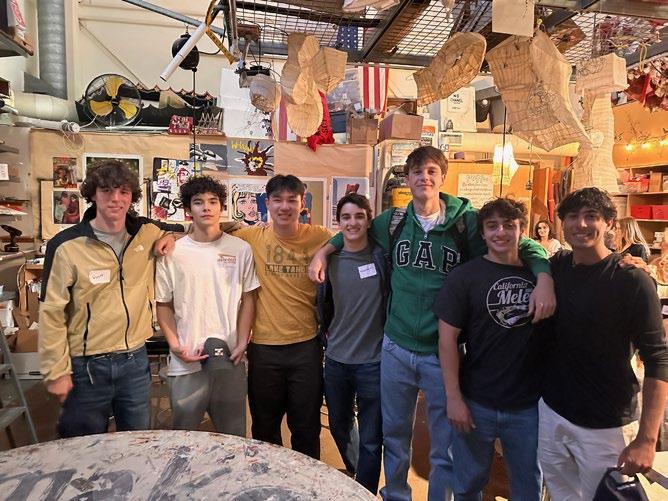
Live Oak graduates from the Class of 2020 and beyond are making an impact at the following colleges and universities.
American University
Art Center College of Design
Bard College
Barnard College
Bates College
Boston College
Brown University
Cal Poly Pomona
Cal Poly San Luis Obispo
Carleton College
Carnegie Mellon University
Case Western Reserve University
Champlain College
Chapman College
Colby College
Colorado College
Colorado University, Boulder
Columbia University
Cornell University
Emory University
Evergreen State College
George Washington University
Harvard University
Haverford College

Johns Hopkins University
Julliard College
Loyola Marymount University
Loyola University New Orleans
Mount Holyoke College
Northeastern University
New York University
Oberlin College & Conservatory
Olin College of Engineering
Oregon State University
Pitzer College
Pomona College
Reed College
San Francisco State University
San Jose State University
Santa Clara University
Scripps College
Seattle University
Smith College
Stanford University
Syracuse University
The New School
Tufts University
Tulane University


University of California, Berkeley
University of California, Davis
University of California, Los Angeles
University of California,
Santa Barbara
University of California, Santa Cruz
University of Chicago
University of Maryland
University of Michigan, Ann Arbor
University of Oregon
University of Rochester
University of Southern California
University of St. Andrews
University of Texas, Austin
University of Washington
University of Wisconsin
Washington University St. Louis
Wellesley College
Wesleyan University
Whitman College
Whitney College
Williams College
Yale University

The Children’s Education Initiative (TCEI) is making a transformative impact on Live Oak by awarding the school a $1.2 million multi-year grant to strengthen its Adjusted Tuition Program. This grant not only represents financial support, but also signifies a powerful collaboration aimed at broadening access to a Live Oak education. Live Oak is thrilled to announce its partnership with TCEI, a San Diego-based 501(c)(3) non-profit organization dedicated to improving the quality of education for socioeconomically disadvantaged children.
In its outreach to potential partner schools, TCEI focused on schools who were actively working to enhance access for underrepresented groups in independent schools in their policies and practices. Live Oak stood out to TCEI due to its commitment to policies that increase access, support for social-emotional well-being, and dedication to academic success. The rigorous application process



We’ve done incredible work over the past ten years to make a Live Oak education accessible to more students. The TCEI grant will allow us to continue to increase diversity in our school community, aligning with our strategic directions to expand resources supporting socioeconomic diversity.
-Virginia Paik, Head of School
Read more about how TCEI is supporting a Live Oak education




We will understand the resources necessary to align our vision and offerings, as well as deepen our financial resilience. liveoaksf.org/forward
